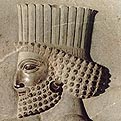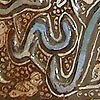 Persian Tile |
 Qajar Lamp |
 Sar Ghalian |
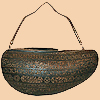 Persian Kashkul |
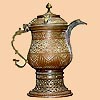 Traveling Samovar |
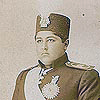 Qajar Photographs |
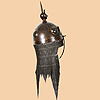 Qajar Helmet |
 miniature Painting |
 Qajar Painting |
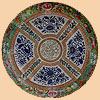 Persian Plate |
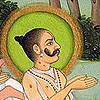 Indian Painting |
It may be said that the golden age of Iranian photography was from the mid 1840's to the mid 1920's. During this period hard working and enthusiastic men with large, slow and heavy cameras equipped with fragile sensitive glasses took pictures of everything within their sight and perfected the art of printing and development of photographs. They pointed their cameras at formal occasions, hunts, summer quarters, historic structures and ordinary people recording thousands of important documents from their era, which are without any doubt the most important pictorial evidence of the era in Iranian history. Their photographs tell a lot about the period, clothes, architecture, customs, faces, types of buildings, jokes and a lot of other information. Besides documentary value, Qajar era photographs present pure,creative and artistic viewpoints without any previous pictorial experience to guide them.
Composition of images, moods, backgrounds and the use of furniture such as chairs and tables attest to the creativity of the photographers.
In the beginning because of its high cost, photography was at the service of the nobility. As a consequence there exists a large number of photographs depicting life in the Qajar court and in the upper classes. Photography expanded during Naser-od-Din Shah's reign, who himself was an enthusiast. He photographed everything that surrounded him: court ceremonies, religious rituals, grand receptions, summering camps, hunts, vazirs and even his own harem women. Naser-od-Din Shah diligently cared for his photographs and organized them into brautiful binded collections. Surviving photographs of this particular era are treasures of pictorial information and documentation about the land, culture and people of Iran during a sensitive period.
Less than ten years had passed the advent of photography in Europe when this technique found its way to Iran.
It was during the latter years of the reign of Mohammed Shah Qajar and the early years of that of his son Naser al-Din Shah, that the royal court took special interest in this magical innovation. Indeed, Naser al-Din Shah was among the first to master the art of photography. He enjoyed working on themes as diverse as the women of his harem, architecture, landscapes, hunting escapades and even political prisoners. He also left behind an excellent collection of self-portraits.
Historical records refer to two French men, Carlion and Richard, whose services were engaged by the court for the purpose of photography and instruction of methods of developing and printing as early as 1844. The European diplomatic missions along with technical and military advisors stationed in Iran were also instrumental in introducing the different methods of printing as they developed in Europe. Furthermore they were active in documenting their sojourn in this part of the orient. August Kerziz Austrian military instructor (1851-59), Focchetti Italian engineer (1847), Luigi Pesce Italian general and military attaché (1848-61), Luigi Montabone Italian photographer (1862) and Ernst Holtzer German engineer (1860’s) are a few examples of such Europeans.
By 1860 photography was taught at Dar al-Fonoun (polytechnic institute) in Tehran. Many students of the institute left for Europe in to pursue and perfect their education in photography. Reza Khan Eghbal al-Saltaneh, Abdollah Khan Qajar, Mohammed Jafar Khan Khadem are Iranians whose photography careers began in the late 1850’s. Roussi Khan, a pupil of Abdollah Khan Qajar, inaugurated the first public photography studio in Tehran in 1878. By 1890 such studios had been established in the main cities such as Tabriz, Isfahan, Bushehr and Shiraz.
Considering the fact that the ground breaking innovations in photography and printing took place between 1839-41 in Europe, the early years of Iranian photography are almost coincidental with and run parallel to that of Europe. As such early Iranian photographers and the Europeans who lived or traveled through Iran at the time, documenting their lives and surroundings through photography are among the forerunners of this art and propagators of this technique in the history of photography.These men have left behind a legacy of photographs depicting their epoch which have found their way to European and American museums, archives of collectors here and abroad, and the vaults of men and women who guard their family heritage.

